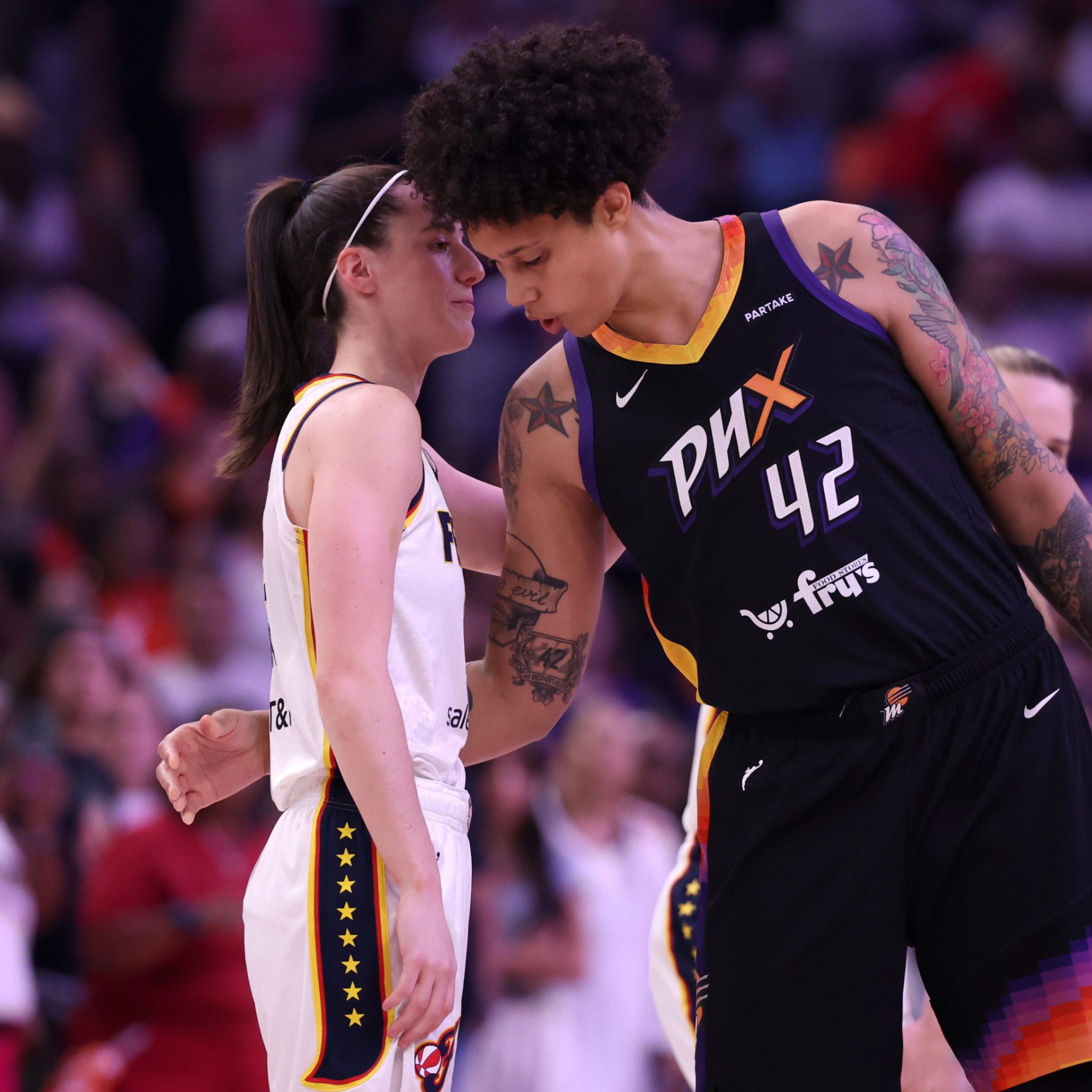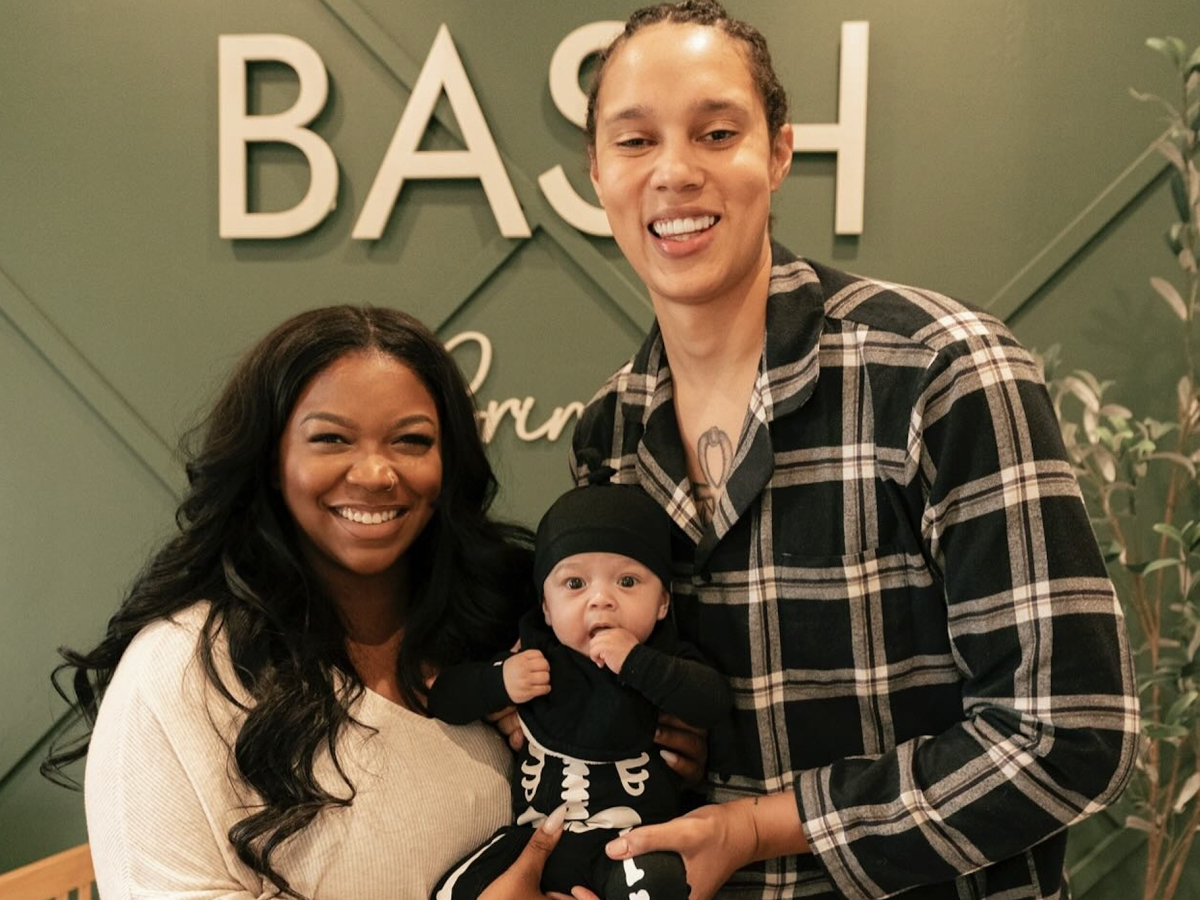The WNBA is facing one of the most critical moments in its history. What should have been a celebration of unprecedented growth and new fan engagement has been overshadowed by controversy and allegations of double standards. At the center of the storm: Atlanta Dream center Brittney Griner, Indiana Fever rookie sensation Caitlin Clark, and a viral video that’s ignited a national debate about race, fairness, and the future of women’s basketball.
The Incident: Viral Video, Explosive Allegations
It began with a heated matchup between the Indiana Fever and the Atlanta Dream. As the game wore on, tensions mounted. In the second half, Brittney Griner picked up her sixth foul, ending her night in visible frustration. As she left the court, cameras caught Griner allegedly muttering what many lip readers and social media analysts interpreted as “trash effing white girl” directed at Caitlin Clark.

The clip exploded across the internet, trending for nearly two days and drawing millions of views. The silence from WNBA headquarters has been deafening—especially when compared to the league’s swift response to previous controversies involving Clark and opposing fans. The contrast has left fans, media, and even political figures demanding answers.
A Pattern of Physicality and Targeting
This wasn’t an isolated incident. Throughout her rookie season, Clark has faced unusually aggressive defense, with Griner’s physical play standing out. Video analysis shows repeated hard screens, excessive contact, and what some analysts have described as “targeting behavior” toward the league’s new star.
Statistically, Griner’s foul rate in games involving Clark far exceeds her season average. Multiple analysts have noted a pattern: Clark, who has single-handedly elevated the WNBA’s profile, seems to be the subject of sustained hostility from some established players.
The Double Standard: Selective Enforcement?
What has truly fueled the outrage isn’t just the alleged slur—it’s the WNBA’s response. Just weeks before, the league launched a comprehensive investigation into claims that Indiana Fever fans had directed racist chants toward Chicago Sky forward Angel Reese. That inquiry lasted nearly two weeks and ultimately found no evidence to substantiate the allegations, but the league’s seriousness and transparency were praised.
In stark contrast, the WNBA has remained silent on the Griner incident, despite clear video evidence and mounting public pressure. Outkick, a sports media outlet, has repeatedly requested statements and clarification from both the league and the Atlanta Dream—receiving no comment in return. Griner herself has also remained silent, further fueling speculation and frustration.
Economic Stakes: The Caitlin Clark Effect
The stakes for the WNBA could not be higher. Caitlin Clark’s arrival has transformed the league. Games featuring Clark average 1.18 million viewers—nearly triple the 394,000 for games without her. Her presence has driven a 170% increase in league viewership, making her the most commercially valuable player in WNBA history.

Sponsors, TV executives, and fans have all taken notice. Clark’s games are appointment viewing, and her absence due to injury has seen ticket prices and attendance plummet. The league’s newfound relevance and financial stability are, in many ways, tied directly to Clark’s star power.
Media and Public Reaction: A Divided Landscape
The incident has drawn sharp commentary from across the sports media spectrum. ESPN’s Stephen A. Smith has criticized both Griner’s alleged behavior and the league’s lack of response, highlighting the economic realities that make Clark’s success pivotal for the WNBA’s future. Other commentators, such as Skip Bayless, have noted the troubling silence from both Griner and league officials.
Meanwhile, some media figures have attempted to downplay or reinterpret the video, suggesting Griner may have been complaining about the referee’s call rather than insulting Clark. But as public pressure grows, more are demanding a transparent investigation and clear answers.
Broader Context: Growing Pains or Systemic Bias?
This controversy comes as the WNBA faces increasing scrutiny over player conduct and league discipline. Recent weeks have seen several high-profile incidents, including Connecticut Sun guard DiJonai Carrington’s on-court altercation with LA Sparks guard Sarah Ashley Barker. Critics argue that the league’s inconsistent enforcement of conduct policies has created an environment where some players appear to operate under different expectations than others.
The WNBA’s rulebook provides clear frameworks for addressing inappropriate behavior, including technical fouls, ejections, and suspensions. Yet the league’s selective application of these standards has raised questions about fairness and accountability.

The Business Imperative: Protecting the Golden Goose
The WNBA’s commercial partners and sponsors are watching closely. Clark’s impact has brought the league unprecedented visibility and revenue, enabling long-desired improvements like chartered flights and better travel conditions for all players. But this success is fragile. When Clark is absent, viewership and ticket sales nosedive, underscoring the league’s dependence on her appeal.
Failing to protect Clark—not just from physical targeting but from racial abuse—risks alienating both the player and the massive audience she has brought to women’s basketball. The league’s credibility, commercial future, and even its survival as a major professional sport may hinge on how it handles this crisis.
What Should Happen Next: The Case for a Thorough Investigation
Given the mounting evidence and public pressure, the WNBA faces an unavoidable responsibility to investigate the Griner incident with the same rigor applied to other controversies. This means:
Interviewing all players, officials, and witnesses present during the incident.
Reviewing video footage and audio evidence.
Analyzing the broader pattern of physical play and conduct between Griner and Clark throughout the season.
Issuing a transparent statement on findings and any disciplinary actions.
Consistency, fairness, and accountability must be the guiding principles. Anything less risks undermining the league’s hard-won credibility and commercial momentum.
Conclusion: The WNBA’s Moment of Truth
The WNBA stands at a defining crossroads. Its response to the Brittney Griner controversy will send a clear message—to players, fans, media, and sponsors—about its priorities and commitment to fair, consistent enforcement of conduct policies. The evidence demanding investigation is overwhelming, and the stakes could not be higher.
Only through decisive, transparent action can the WNBA demonstrate that it values all its players, upholds its standards, and is prepared to seize the unprecedented opportunity that Caitlin Clark’s arrival has created. The time for investigation is now. The league’s credibility—and its future—hang in the balance.